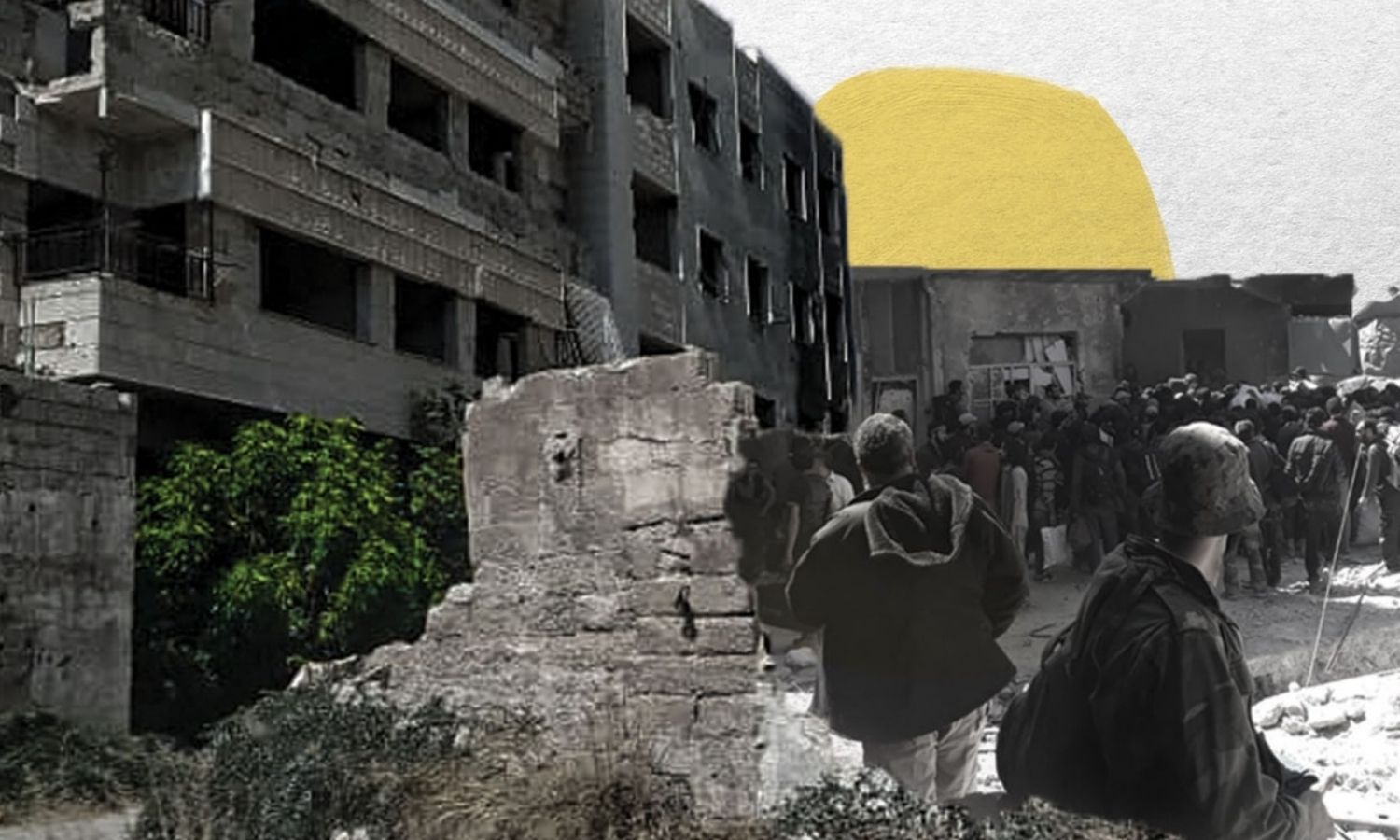



“A large fig tree grew at the entrance to the building,” in a trembling voice, the 50-year-old Shahad described to Enab Baladi the entrance of her building in the northern neighborhood of al-Qaboun in the capital, Damascus, after the family abandoned it for years.
Shahad (pseudonym) left her home in 2012 with hundreds of al-Qaboun residents who fled a military campaign launched by the Syrian regime to be the beginning of a long series of repeated displacement movements that the neighborhood witnessed.
Between the bombing and burning of houses, in addition to the looting acts by the regime forces and allied militias, most of al-Qaboun’s houses were turned into rubble or unclad roofs and walls.
Despite the deliberate sabotage that affected the al-Qaboun neighborhood and the regime’s continuation of preventing residents from entering it, the governorate of Damascus set, on 17 October, a deadline for the neighborhood’s residents to restore their homes and rebuild the destroyed parts of them, with a maximum period of six months from the date of granting the restoration permission and according to specific conditions.
Damascus Provisional Council required those wishing to rehabilitate their houses in al-Qaboun to do so at their “own expense,” Shahad said, adding, “After losing everything, we now live in a rented house, and I can hardly secure the costs of daily life,” pointing out her inability to restore the house that will cost her millions of Syrian pounds.
“The Council will not even remove the rubble in the streets, which will multiply the costs imposed on the residents,” Shahad continued, describing the restoration decision as a “mockery of people’s pain.”
Besides the high restoration costs, people’s fears of repeated looting operations continue.
In her Damascene dialect, Shahad expressed her fears of looting by asking, “Why should I install a new door if they are going to loot it the next day), hinting that this prevents her from any restoration acts, even if she had enough money to do so.
Maram (pseudonym for security reasons), another former resident of al-Qaboun, told Enab Baladi, “Restoration is a dream, and the amounts required for minor repairs are not within our means,” expressing fears that the regime forces would once again loot the rehabilitated houses.
Damascus governorate stipulated that those wishing to restore should submit a documented pledge to the notary public not to claim any compensation when requesting eviction to implement the urban development plan that the regime has been talking about since the restoration of its control over the area.
“No one will risk paying millions to restore a house that is threatened with demolition,” Shahad said, as is the case with most of the al-Qaboun houses that the regime worked to prepare as part of the urban plans.
“I did not keep pictures of my house after my last visit to it, in an attempt to forget the dire situation in which I saw it, and as its ownership remains in question since the day I left it,” Shahad said.
“My house was not destroyed by the bombings and shelling, but it may be destroyed under urban plans,” she added.
Although the development and urban planning in al-Qaboun have so far remained ink on paper, the Syrian regime continues to talk about it, which increases the people’s fear of returning instead of reassuring them.
With the Syrian regime allowing the displaced people to return to their homes, many of them have returned, but services have not returned.
The absence of services is a common reality experienced in the Eastern Ghouta suburb of Jobar, al-Qaboun, and other areas.
According to information obtained by Enab Baladi from seven people who visited al-Qaboun during the past months, most areas depend on “amperes” generators to get electricity due to long-hour power outages.
The repeated bombing of the neighborhood also led to in wide destruction of the water and sewage networks.
While the regime set a deadline for restoration, government promises to provide any services to the people were absent.
The industrialists in the region are facing the same problems.
Ghassan Qalaa, former head of the Damascus Chamber of Commerce Federation and one of the al-Qaboun industrialists, demanded, on 5 October, the return of state services to the district, coinciding with allowing the return of industrial activity.
Qalaa considers that returning to work is “impossible” without the governorate providing basic services.
The Syrian regime is seeking to push the people to restore their homes, coinciding with its continuous demand for financing the reconstruction in Syria, local observers and activists say.
According to the estimates of the Economic and Social Commission for Western Asia (ESCWA), in 2018, the real cost of reconstruction was about 400 billion US dollars.
At that time, the ESCWA report estimated the loss caused by the destruction in Syria at more than 388 billion US dollars, pointing out that this figure does not include the human losses and the people who left their homes.
if you think the article contain wrong information or you have additional details Send Correction